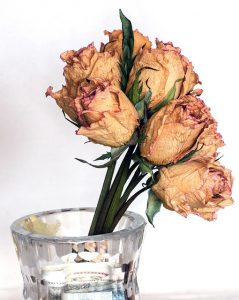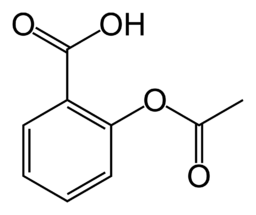Everyone loves receiving flowers, but they don’t last forever. We can’t stop flowers from eventually wilting away, but we can help you keep your flowers alive for as long as possible. We’ve looked at many of the recommended methods that the internet suggests and can suggest which ones are worth your time.
If you start to research this online you’ll find plenty of suggestions. Some sound plausible, while others are…
surprising? As florists we’ve got plenty of experience with keeping flowers alive and we receive feedback from customers on what works and what doesn’t, so over the years we’ve built up a good system for keeping your flowers fresh and alive for as long as possible.
For this article we’ve also done a little research on the science side to try and better understand how the various methods are supposed to work. At the end of the article you’ll find our verdict for which methods to use (and which to forget), so if you’re not interested in the theory and just want to know what to do, then skip to the bottom.
Method 1: Aspirin
Adding an aspirin to your vase as soon as you receive your flowers has been an internet favourite for a long time. A quick Google search brings back over 400,000 results, but how is aspirin supposed to keep your flowers fresher longer?
One of the biggest factors in the deterioration of flowers is the build-up of bacteria. As soon as you cut your flowers, bacteria will feed off the nutrients inside the stem and begin to multiply. Once it hits a certain critical mass, the bacteria can end up preventing the water and other nutrients from making their way up the flower.
When the flower can no longer get access to the stuff it needs to stay alive, it begins to wilt and eventually die. Aspirin is supposed to help prevent the build-up of bacteria and therefore keep your flowers alive longer.
That’s the theory anyway, in practice we’ve found that aspirin doesn’t help as much as it sounds like it should. If you like experimenting with things, it might be worth a shot (and it’s unlikely to actually hurt your flowers), but if you’re looking for ways to keep your flowers alive with the least amount of fuss then it’s time to move on to method number two…
Method 2: Apple Cider Vinegar
According to the internet, apple cider vinegar is the only thing you need in your medicine cabinet. Spent a bit long in the sun and need to soothe those sunburns? Apple cider vinegar is for you. Do you need to lower your blood sugar levels? Clear up your skin? Again, the internet claims that apple cider vinegar is just what the doctor ordered.
And if this is true (and we’re in no way making any medical claims), then it makes sense that it could help keep your flowers alive longer. Similarly to aspirin, apple cider vinegar is said to help limit the growth of bacteria.
In our experience, however, any effect that apple cider vinegar may have is minimal at best. Perhaps it slows down the growth of bacteria to some extent, but if you just care about extending the life of your flowers then keep apple cider vinegar for your medical ailments.
Method 3: Sugar
Adding a couple of tablespoons of sugar to the water helps to nourish the flowers and provide with energy. It’s what makes up the bulk of flower food and in our experience can be worth doing yourself.
Humans aren’t the only organisms on Earth th
at use sugar as energy. The flowers of a plant actually benefit from the sugars created by the process of photosynthesis. When a plant is cut, however, the leaves are often cut off as well, meaning that the food supply begins to dwindle.
This is why the bulk of any “flower food” is actually just plain old sugar. Flower food usually contains some kind of acidifier as well because adding sugar to a solution means that bacteria will also feed off it.
We have found that adding sugar to your water can help in keeping the flowers alive longer, but if you do this you’ll also need to do something about the bacterial growth. If you want to try this method yourself, just add 2-3 tablespoons of sugar to your vase when you first receive your flowers.
Method 4: Cutting Stems
Flowers aren’t all that different to us really; just as we need food and water to survive, so do flowers. In the previous method we looked at the importance of sugar in keeping flowers alive and in this next method we’ll look at the importance of getting plenty of water up into the stems of your flowers.
Just as you likely don’t feel very good when you’re dehydrated, your flowers don’t either. When you receive your flowers, the stems are probably still fine because they were cut earlier that morning. However, after a couple of days, the stems will have clogged up a little, meaning that the flowers no longer get as much water as they would like.
From experience, this is something you can do to increase the longevity of your flowers. To get the most from your effort, make sure you cut the stems on a 45 degree angle so that the surface area is maximised. Also try and cut the stems under water so that bubbles don’t enter the stem and make it harder for the water to rise up than necessary.
Finally, if you’re going to do this, the right frequency is about every other day. Doing it every day is probably overkill and takes up too much of your time.
Method 5: Avoid Sunlight, Heat & Aircon
Plants can be a little temperamental and don’t like the sun. Sun, heat and aircon can all dry the flowers out and cause them to wilt faster. Keeping them away from the sun and in a cool spot can help slow the effects of bacteria as well. In our experience with flowers this is definitely worth doing if possible.
Plants are sensitive little things and if the environment they’re in isn’t perfect then they can wilt faster than you may like. This method suggests you keep your flowers out of bright sunlight, heat and away from any direct air conditioning.
In our experience with keeping flowers at our warehouse, these tips definitely have some merit. Whether it’s a big deal or not depends on the season, the weather and where you tend to display your flowers.
Method 6: Change Water & Clean Vase
As mentioned above, bacterial growth is one of the factors that contributes to the early death of flowers. One theory suggests that one way to counter this is by tipping your water out every other day and giving the vase a good clean, therefore ridding the environment of any bacteria that may have built up.
The theory certainly makes sense, but in our experience it might not be worth the effort. If you’re doing other things to stop the proliferation of bacteria in the first place then there shouldn’t be too much bacteria around to cause a problem anyway.
Whether you bother with this method depends on you. If you’ve got plenty of time and a high desire to keep your flowers alive for as long as humanly possible, then it might be worth the effort. If you’re a little more pressed for time or you aren’t as fussy about trying to break the Guinness World Record for keeping your flowers alive, then you might be better of spending your time elsewhere.
Method 7: Hairspray
Another tip that has done the rounds on the internet. The theory is that it helps keep the petals a bit stiff and fresh looking. In our experience this isn’t true and probably isn’t something you want to waste your time with.Perhaps we have just used the wrong brand of hairspray, but there’s a better chance that it’s just not worth your time.
Method 8: Remove Petals Below Water Line
Working on the idea that bacteria and flowers don’t mix, this method claims to work because leaves can harbour the growth of bacteria. While this makes sense, in our experience there’s little difference in keeping the petals out of the water.
This may depend on the number of petals in the water, there could very well be a critical mass of petals that result in a large amount of bacterial growth, but for most people this step is unnecessary unless they happen to like clipping the petals off for fun.
Method 9: Add Bleach to Water
Another method for eliminating the problem of bacteria, adding bleach to your water is another popular internet tip. And this tip makes sense since bleach is great at killing bacteria. In our experience though, bleach doesn’t really make a huge amount of difference. It might be worth a try since it’s easy to do and cheap.
Method 10: Copper Penny
Before you write this one off as an old-wives tale, realise that there are now trials going on in hospitals testing the addition of copper film to the clothes of doctors. Because copper has antibacterial properties, this method might make more sense that you’d initially think.
However, in our experience there was no difference between leaving a penny (if you can even find one these days) and not worrying about it. It might provide an interesting science lesson for kids, but if you just want to keep your flowers alive longer then this one isn’t one to focus on.
Method 11: Put the Flowers in the Fridge
Just as we place food in the fridge to stop certain bacteria from thriving, we can also place flowers in the fridge overnight to keep them alive even longer. The colder temperatures slow down bacterial growth and other chemical reactions.
In our experience this has the greatest effect on longevity and is the best thing you can do if you want to keep your flowers alive as long as possible. However it does require small flowers or large fridge. So while it may not be practical, if you’re serious about keeping your flowers alive for as long as possible and don’t mind putting them out again each day, then this is the method for you.
Method 12: Vodka
There are some people who think all their problems can be solved with Vodka and this seems to include keeping flowers fresh. Alcohol is a good inhibitor of bacteria, which is why people used to drink beer rather than water in the middle ages.
In our experience, adding vodka (or any clear spirit) can help with keeping your flowers fresh. It’s strange that alcohol would work better than something like bleach, but we’re florists, not scientists. To do this, just add a couple of tablespoons of vodka (any brand will do) to your water.
The Verdict
If you want to keep your flowers fresh for as long as possible, the best thing is to put them in the fridge overnight. But we understand this isn’t always possible, so the next best things to do that are effective and easy is to:
- Keep out of hot sun and away from air conditioning
- Cut stems every other day under water and at an angle
- Replace water every other day
- Add 2 tbsp of vodka or other clear spirit to water












